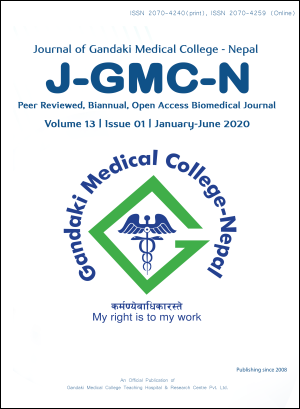Exploring the potential of human adipocytes in periodontal regeneration: A review
DOI:
https://doi.org/10.3126/jgmcn.v13i1.28370Keywords:
Adipose-derived stem cells, Periodontal disease, Processed lipoaspirate, Stem cells, Stromal vascular fraction, Tissue engineeringAbstract
Stem cells, initially identified in embryonic tissues and later in numerous adult tissues, tend to possess the potentiality to differentiate into various cell types. Though most flexible of all stem cell lines, ethical issues restrict the use of embryonic cells. Furthermore, induced pluripotent stem cells (iPS) and adult stem cells (e.g: bone marrow stroma) can also be used. However, procurement of autologous bone marrow has its potential limitations. An alternate source of autologous adult stem cells which can be procured in large quantities, under local anesthesia, with minimal discomfort would be of keen interest. In the present context, human adult adipose tissue may be the best appropriate alternative source of mesenchymal stem cells. Studies have shown that adipose stem cells (ASCs) extracted from subcutaneous human adult adipose tissue tend to contain heterogeneous cell population called stromal vascular fraction (SVF). It may be used directly or cultured in for selection and expansion of an adherent population, and hence, they are called ASCs. The adipose tissue, obtained by suction-assisted lipectomy (i.e., liposuction), are processed to obtain a fibroblast-like population of cells, also called processed lipoaspirate (PLA). PLA cells has the potentiality to differentiate in vitro into adipogenic, chondrogenic, myogenic, and osteogenic cells in the presence of lineage-specific induction factors. This attributable feature of ASCs may be of significant importance in future clinical cell-based therapy for periodontal disease as well. This review describes current knowledge & recent advances in ASCs & their application. This review describes current knowledge and recent advances in ASCs and their application in periodontal regeneration.
Downloads
Downloads
Published
How to Cite
Issue
Section
License
This license allows reusers to distribute, remix, adapt, and build upon the material in any medium or format for noncommercial purposes only, and only so long as attribution is given to the creator.




